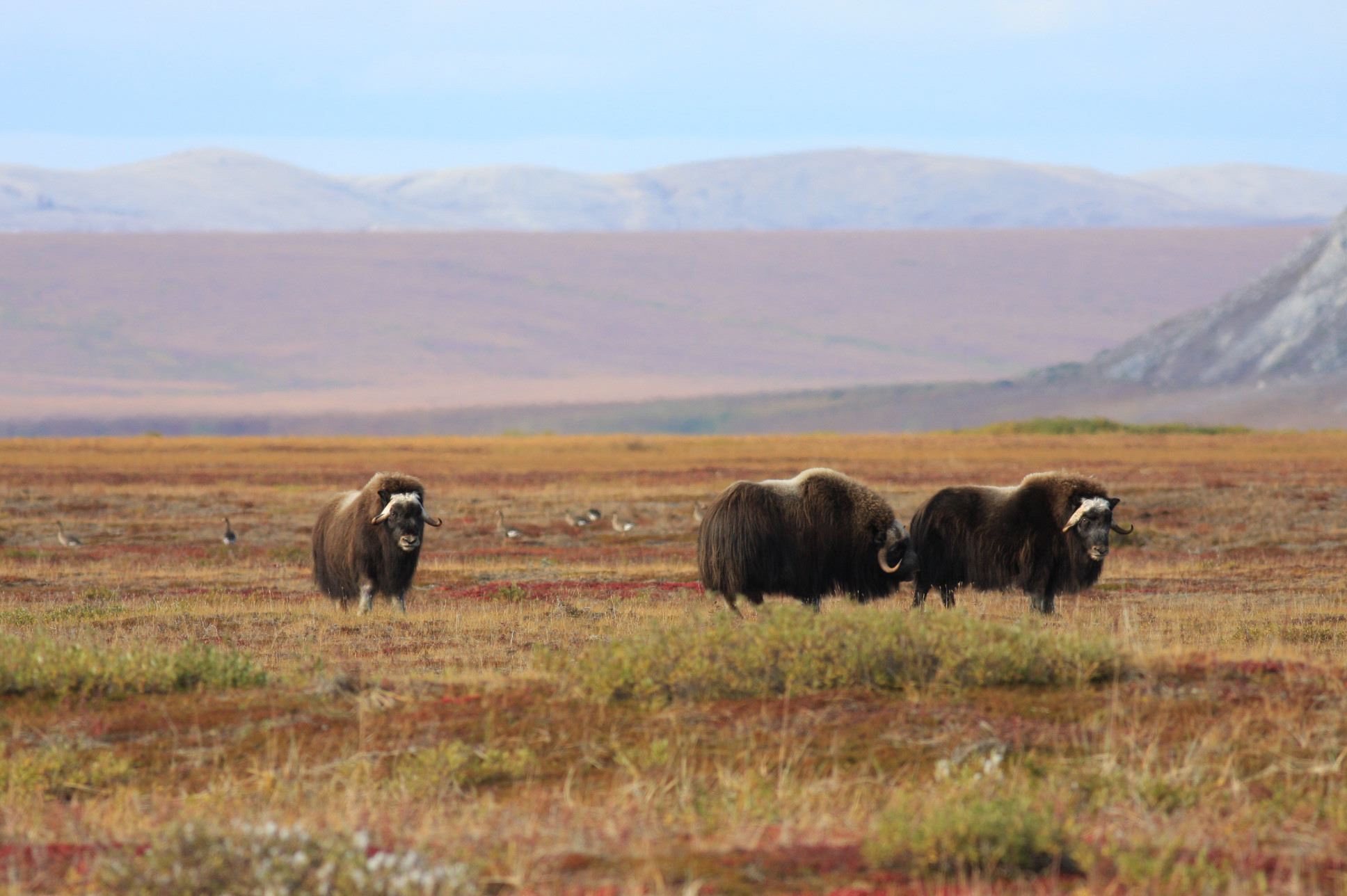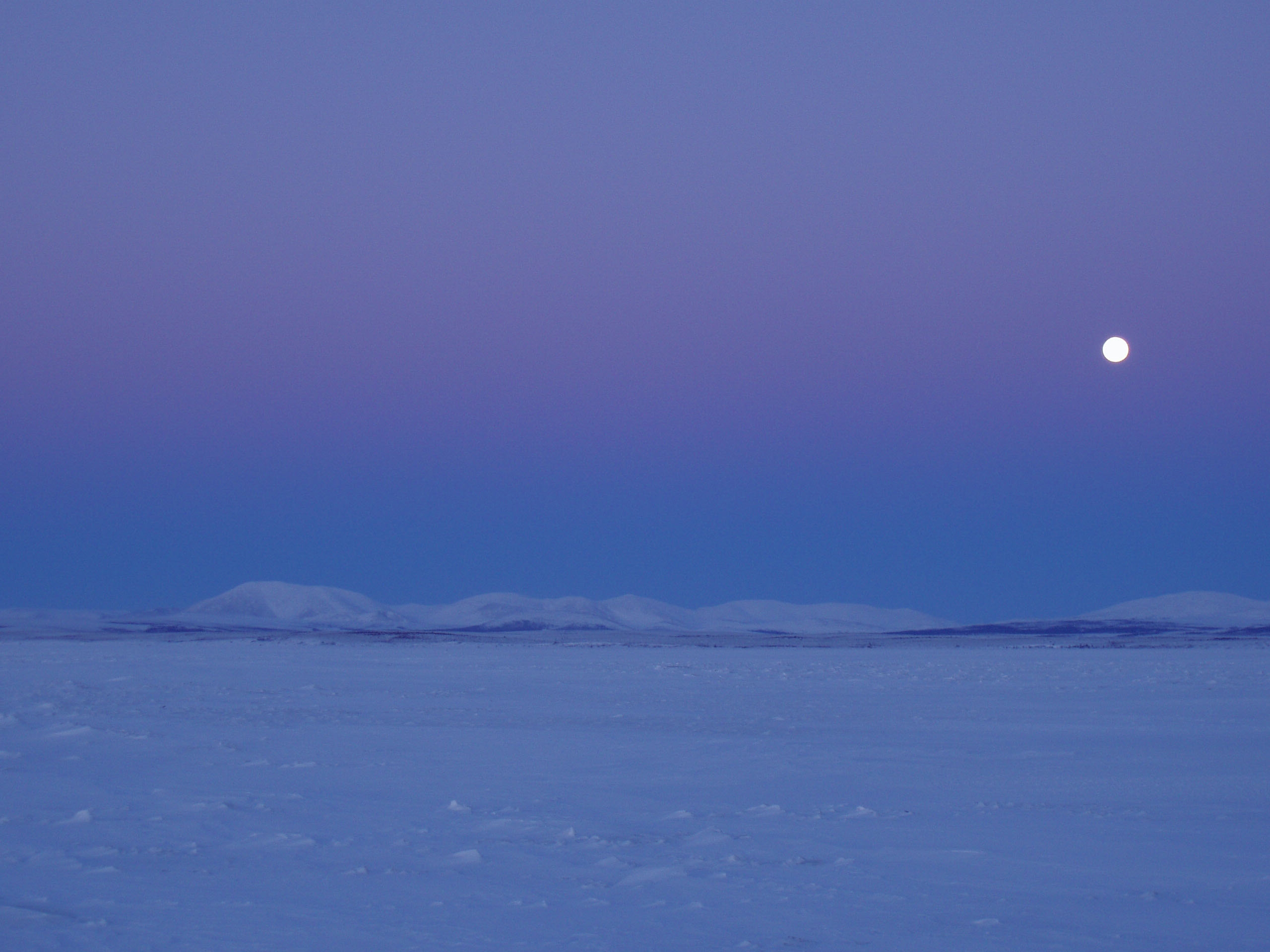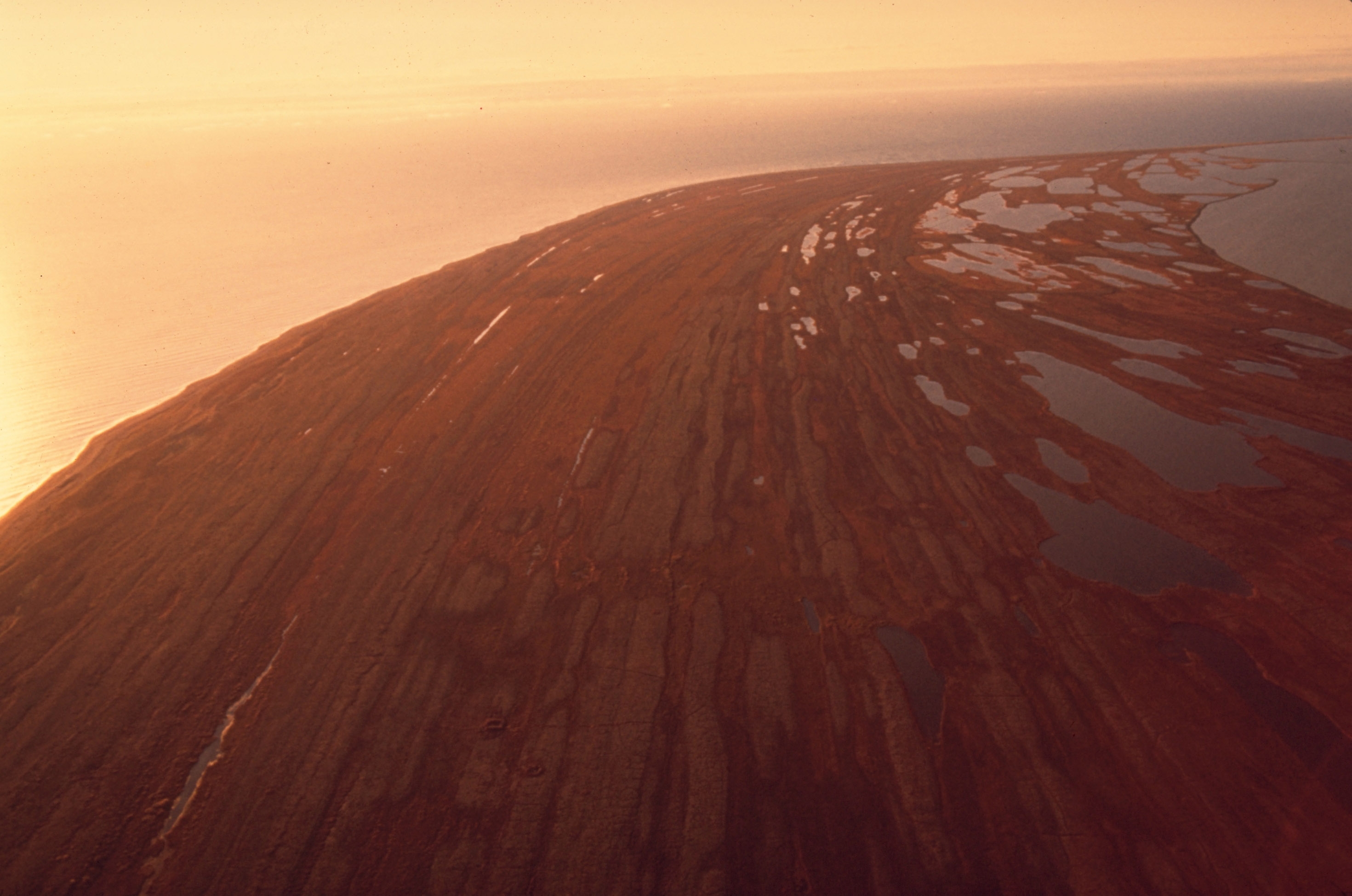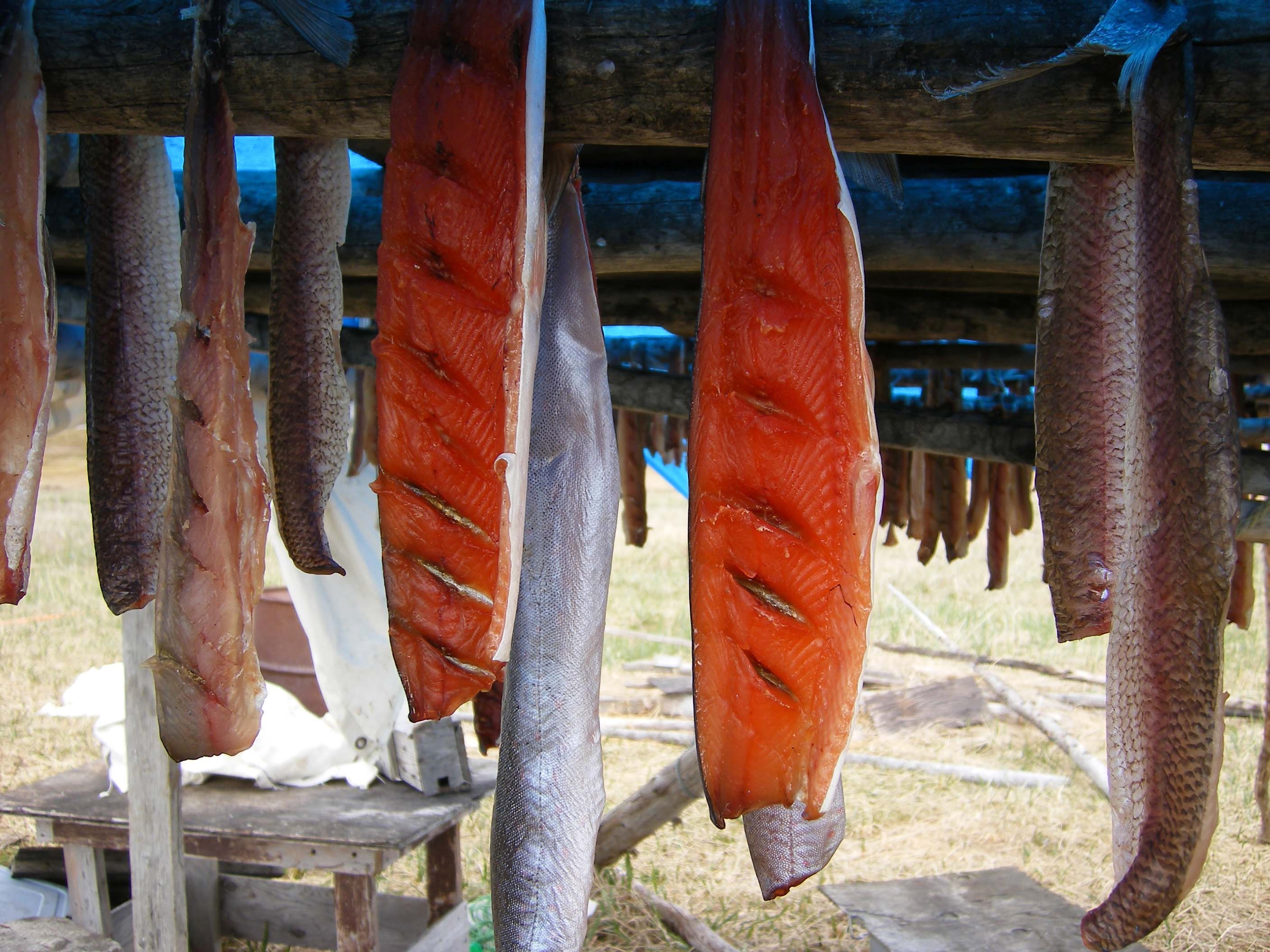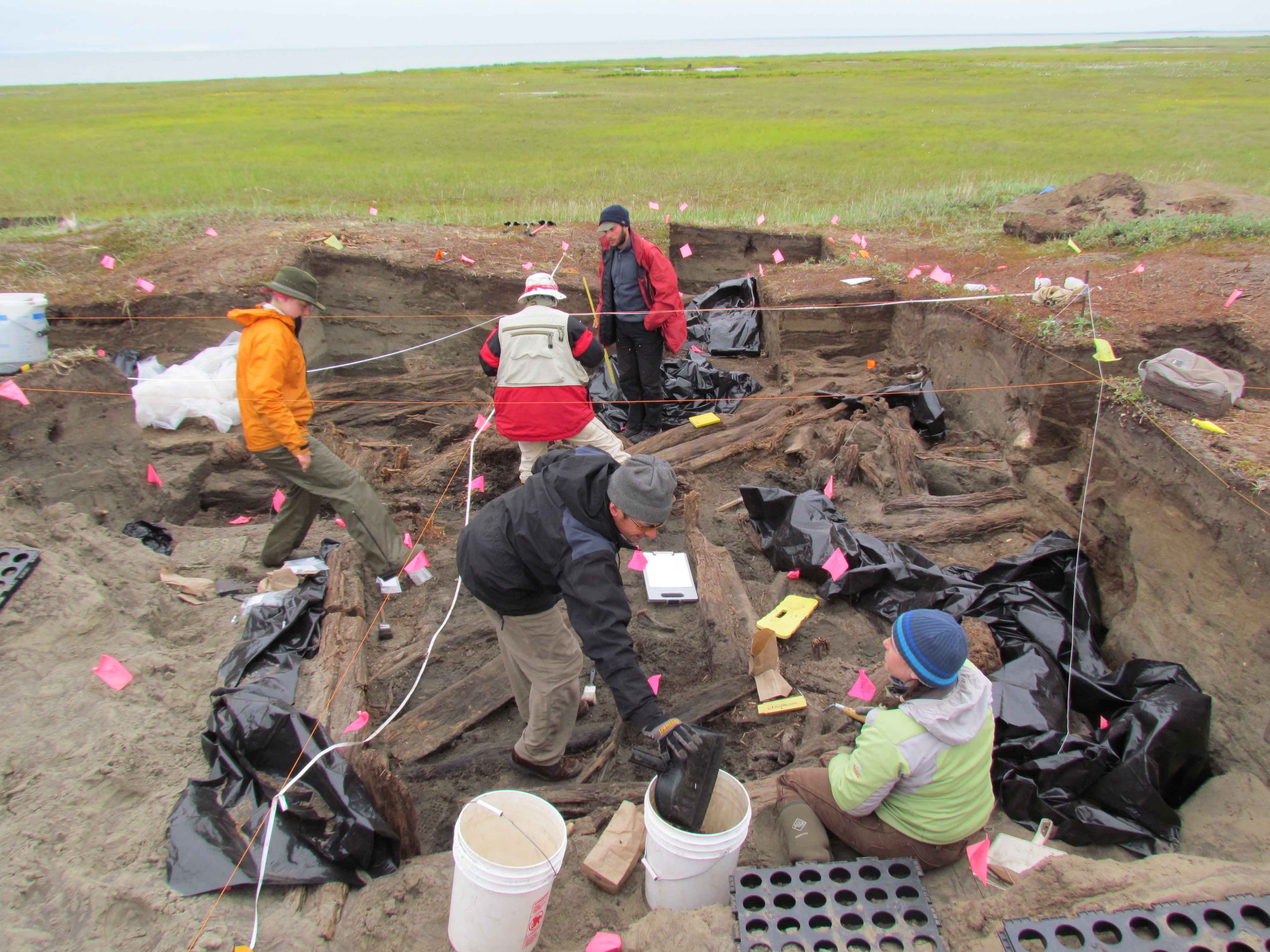A bridge to the past and a land for the future, Cape Krusenstern National Monument protects approximately 560,000 acres of diverse Arctic coastal, and upland ecosystems. Inhabited by the Iñupiaq people since time-immemorial, over 5,000 years of sequential human use is documented in the 114 successive beach ridges. Rich connections to the land and waters are preserved through subsistence practices.
Muskox and Geese
Muskox and Greater White-fronted Geese on vegetated beach ridges in front of the Igichuk Hills.
Winter Moon
January light and a bright moon at 2 pm over the Igichuk Hills in Cape Krusenstern National Monument.
Beach Ridges on the Shore of Cape Krusenstern
Beach ridges created by years of wave action during storms can be seen as parallel lines in the fall vegetation covering the old gravel.
Fish on a Drying Rack
Pike (left and right) and trout (middle) dry on a rack at a subsistence camp. The slash marks allow more air to circulate and dry the meat more quickly.
Old House Uncovered
A University of Washington archeology crew conducts research on an old semi-subterranean house along the beach ridges of Cape Krusenstern. Old house timbers are slowly revealed about 4 feet down
